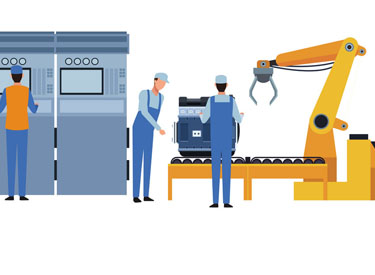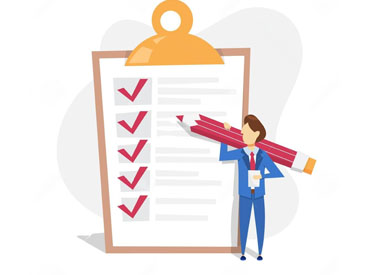Slider Section

Customer Requirement
Absolute Engineering, which might be involved in engineering solutions and services, customer requirements typically cover various technical and business aspects. Here's how you might structure customer requirements for such a company
Design Requirements Detailed specifications for design, including dimensions, materials, and standards.
Compliance Absolute Engineering Pvt.Ltd industry standards, regulations, or certifications that need to be met.
Quality Standards Expected durability and reliability of the solution.Testing requirements and methods to ensure quality
Cost The budget constraints and cost considerations for the project.How pricing should be structured (fixed price, time and materials, etc.).
Designing and Development
Absolute Engineering Pvt Ltd Designing and developing brass components involves several steps to ensure the final product meets quality standards, functional requirements, and design specifications. Here's a general outline of the process
Initial Planning and Requirements Gathering Absolute Engineering Understand the specific requirements of the customer, including dimensions, performance criteria, and intended application.Define detailed specifications such as alloy composition, mechanical properties, and surface finish.
Design Phase Develop initial design concepts and sketches. This may include CAD (Computer-Aided Design) models to visualize the component.Choose the appropriate brass alloy based on properties required.Create prototypes to test design concepts and validate functionality.


Purchase row materials
Absolute Engineering, it's essential to follow a systematic process to ensure the materials meet quality standards, cost requirements, and project specifications. Here's a detailed guide to purchasing raw materials
Material Requirements the material specifications, including type, grade, dimensions, and any special properties.Determine the quantity of raw materials needed based on project requirements and production plans.
Source Suppliers Identify potential suppliers who can provide the required materials. This might involve searching for vendors with a good reputation, relevant experience, and certifications. Obtain quotations from multiple suppliers to compare prices, delivery times, and terms. Assess suppliers based on factors such as quality, reliability, cost, delivery times, and customer service.
Manufacturing work
manufacturing environment like Absolute Engineering, the process typically involves several stages, each critical for producing high-quality products. Here's a comprehensive overview of the manufacturing work process
Planning and Design Review the design specifications and engineering drawings to ensure they are complete and feasible. Develop a production plan, including resource allocation, scheduling, and workflow design.Identify and procure raw materials and components needed for manufacturing.
Tooling and Setup Design and manufacture or source the necessary tools, molds, dies, and fixtures. Prepare and calibrate manufacturing equipment and machinery for production.
Manufacturing Processes Pour molten material into molds to create the desired shape. This is common for metal components.Use cutting tools to shape the raw material into the final product. Techniques include turning, milling, drilling, and grinding.Assemble components through welding, brazing, or other joining methods.


Quality Control
Quality control (QC) at Absolute Engineering involves systematic processes and procedures to ensure that products meet defined standards and specifications. Here's a detailed approach to implementing quality control effectively
Quality Planning Establish clear quality standards and specifications for each product or component, including industry standards and customer requirements. Create a comprehensive quality control plan that outlines procedures, responsibilities, and criteria for inspections and testing.
Inspection and Testing Inspect raw materials and components upon arrival to ensure they meet specifications and are free from defects. This may include visual checks, dimensional measurements, and material testing.Monitor and inspect products during various stages of the manufacturing process to detect and address issues early. This can include checking dimensions, tolerances, and functionality.
Final Inspection
Final inspection at Absolute Engineering is a critical step in the quality control process, ensuring that the finished products meet all specified requirements and standards before they are delivered to customers. Here's a detailed approach to conducting a final inspection
Preparation Understand the product's specifications, including design requirements, performance criteria, and any relevant standards or regulations.Develop a final inspection plan outlining the procedures, criteria, and methods to be used.
Inspection Process Examine the product for any visible defects, such as surface imperfections, incorrect assembly, or misalignment.Measure key dimensions and tolerances to ensure they conform to design specifications. This may involve using precision measuring tools and instruments.Test the product to verify that it performs as intended under normal operating conditions. This could include operational tests, stress tests, and safety checks.


Material packing and shipping
Material packing and shipping at Absolute Engineering involves preparing products for transportation in a way that ensures they arrive at their destination in good condition, meet customer requirements, and comply with any relevant regulations. Here's a detailed approach to material packing and shipping
Packing Preparation the product's requirements for packing, including size, weight, fragility, and any specific handling instructions.Select appropriate packing materials based on the product's characteristics. This might include cushioning materials, protective wraps, and sturdy boxes or crates.
Labeling Attach clear and accurate shipping labels that include destination addresses, return addresses, and any special handling instructions.Include barcodes or QR codes for tracking and inventory management purposes.
Documentation Prepare a packing list detailing the contents of each package. This helps in verifying that all items are included and assists with customs documentation if shipping internationally.Complete and include any required shipping documents, such as bills of lading, certificates of origin, or customs declarations.
Shipping and Tracking Send the packages to the chosen carrier. Confirm that the carrier has received and accepted the shipment.Monitor the shipment's progress using tracking systems provided by the carrier. Share tracking information with customers if applicable.

